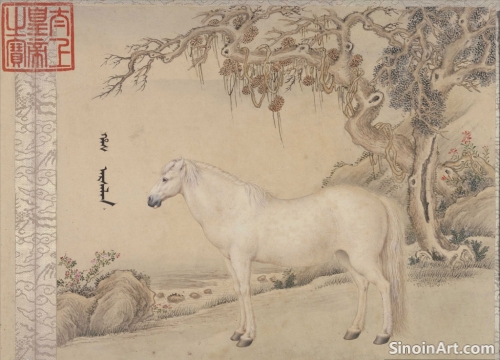Gongbi Painting and the Influence of Chinese Poetry
|
The intricate detail and symbolic language of Gongbi painting often find a harmonious complement in the imagery and themes of Chinese poetry. Many Gongbi paintings are directly inspired by poems, or incorporate elements that reflect the mood, imagery, and symbolic meanings found within classical and contemporary Chinese verses. The connection between the two art forms often enriches the overall experience of the works.  The visual language of Gongbi painting shares many common elements with the descriptive imagery often found in Chinese poetry. The artists seek to represent the natural world with the same level of detail and sensitivity as the poets. The focus on natural beauty and observation is key to both forms of expression.  Many Gongbi paintings depict scenes or figures that are directly inspired by specific poems. The artists interpret the verses and seek to create a visual representation of the feelings and ideas expressed in the written word. The art becomes a visual illustration of the poetic verse.  The incorporation of poetic inscriptions or calligraphic verses within Gongbi paintings enhances the overall literary and artistic impact of the work. These inscriptions often provide additional context, commentary, or symbolism to the visual scene. The combination of these art forms create both literary and visual power. The use of symbolism in both Gongbi painting and Chinese poetry often reflects shared cultural and philosophical concepts. Elements like flowers, birds, and landscapes are often imbued with similar symbolic meanings, creating a deeper resonance between the two art forms. This shared understanding of symbolic meaning enhances the power of both forms. The influence of poetry on Gongbi painting creates a synthesis of visual and literary art forms, enriching both fields of expression and offering a deeper understanding of the interconnectedness of culture and artistic expression. The combination of the two forms offers a richer understanding of the cultural context. |
Tag : Gongbi and poetry, Chinese poetry, artistic inspiration, literary art, visual verse
Related information
- Gongbi Painting and the Depiction of Waterfalls and Streams
- The Conservation and Care of Gongbi Paintings
- Gongbi Painting and the Depiction of Historical Events
- The Delicate World of Gongbi: An Introduction
- Gongbi and the Depiction of Water: Flow, Reflection, and Atmosphere
This article explores the depiction of waterfalls and streams in Gongbi painting, highlighting the techniques used to capture the flow, movement, and reflective qualities of water, and how these works demonstrate a mastery of technique and appreciation for nature.
This article provides essential information on the conservation and care of Gongbi paintings, including controlling the environment, proper storage, framing techniques, cleaning recommendations, and the importance of regular inspections to ensure the longevity of these delicate artworks.
This article explores the role of Gongbi painting in documenting and interpreting historical events, highlighting its meticulous detail, portrayal of figures, use of color, and how these works act as both visual records and cultural perspectives on the past.
This article introduces Gongbi painting as a precise and detailed art form within Chinese traditional art, highlighting its techniques, historical themes, materials, and contemporary relevance.
The depiction of water, with all its fluidity, dynamism, and reflective qualities, is a significant element in many Gongbi paintings. Artists employ a variety of techniques to capture the movement, texture, and atmospheric effects of water, ranging from still ponds and meandering streams to rushing waterfalls and expansive seas. The depiction of water is often a central element of a successful composition, adding depth and beauty to a piece.